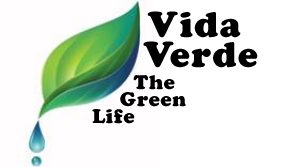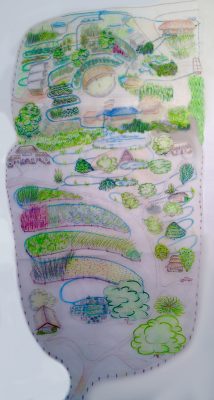A perennial question in Permaculture is: how do we design for projects that match the scale of need? «Water and a Forest for every Village» is a grassroots initiative that carries a new vision for Earth Care.
If we are to recognize and bring deep respect to the complex web of relationships that exist in nature, then perhaps we can sync with nature’s patterns and truly assist the healing process. This crowdfunding project’s focus on rain-water harvesting to support community-based reforestation is a holistic system-oriented approach. A collaboration of veteran Permaculturalists and indigenous people that are reclaiming their ancient techniques, this project weaves across cultures and across time.
If crowdfunding can raise a million dollars for a rock star, or for a kitchen gadget, why can’t we raise money to heal an ecosystem? Let’s give it a try! At minimum, I hope this article will inspire some to grow your Earth Care dreams to the scope of a community or an ecosystem. To elucidate the project, I’m including this interview. Griselda, the interviewer, is a former Wall Street paralegal from the Dominican Republic, bringing a her unique point of view. She is interviewing me as the current project coordinator. I have been involved in Permaculture since the early 80s and have experience as a teacher, designer and project coordinator in 7 distinct latitudes/ climate zones.
GG: Zia, tell us a little about your background that has led to this project.
ZP: I have delightful memories of homesteading in British Columbia in the 70s, when we could walk out the back door, and would not run into a sign of civilization for 150 miles.
I have been very involved in Permaculture since I trained as a teacher in 1991, after directing an agro-forestry project in Equatorial Guinea, W. Africa—which was used as a model for a $2.5 million project. These are some of the influences for this project that I’m coordinating now—for water harvesting to support eco-system recovery and reforestation for the valley that is now our home, Vilcabamba Valley in Southern Ecuador
GG : Community-based reforestation, funded with crowdfunding. That is a big bite. Why have you been motivated to do this now?
ZP: My years living very close to nature in British Columbia helped me to melt the shields that keep us from being able to feel Nature and understand that I am a part of Nature. I believe that an initiative that grows from the grass-roots has a better chance of healing Nature. We generally leave reforestation efforts to governments, then are critical if they don’t get it right. But if we leave it to the governments, it will be too little, too late. Too linear, too monoculture.
The well-known quote from Masanobu Fukuoka comes to mind, «those who break off a piece of nature lay hold of something that is dead, and, unaware that what they are examining is no longer what they think it to be, claim to understand nature.» We all know that some very basic changes are being called for and urgently so! To get down to cause, we really need to bring a system-orientated holistic approach. My grandmother, a pioneer that walked across the American plains, “watching the big wheel catch up with the little wheel” of the covered wagons of just 100 years ago, taught me the game of poker so she would have someone to play with. One of her well-worn sayings was “up the anti”. That is, scale it up! Those of us that know permaculture design have a key.
What if we take back our power to act as a citizens force to bring healing in some key crisis areas?
GG: How would this project be different? How would it apply a system oriented approach?
ZP: Many ways. First, by the questions we ask. How can we support nature to heal?
Observation is not only the first step, but a constant in Permaculture. Vilcabamba Valley is the chosen site of this project. Observing the valley and the surrounding bioregions as whole living systems, and the watersheds within the valley as whole systems, and each property as a system is important. Obviously, each watershed and each property has to be addressed as highly unique with very specific profiles that must be addressed.
Our basic aim is healing the water cycle, and if we want to heal the water cycle, we need trees. Mollison’s great illustration from the Permculture Designer’s Manual of 85% of precipitation coming DOWN from the sky via condensation and 75% going UP via evaporation & transpiration has been great for Ecuadorean farmers to understand why recovering forests can be helpful in terms of their direct benefit and for healing the rain-water cycle.
In an ecuatorial sub-tropical climate zone such as Vilcabamba’s, that has up to 5 months of dry season, to have successful reforestation we need to provide a way to store water in the eath so the basic need for water is supported. Water retention landscaping with contour canals, swales, and small contour ponds is such an important key—not only for success on our homesteads and private properties, but for healing the global climate crisis. Let’s dream big for our Earth Care projects. Lowering our dependence on fossil fuels is important, but only part of the puzzle.
Our idea is to work with existing organizations, such as water boards and farmer’s organizations, to identify interested land-owners which can then be directed toward trainings. Implementation will be incentivized. For example, 30 m. of swales dug by a farmer that has submitted a design plan based on his training, followed by 30 m. paid for by the project, and continue to leap-frog in that way until the design plan for that property is complete. We also aim to work with local government and NGO organizations to assess what areas have the highest potential for helping to stabilize the climate, then prioritize key action areas.
We have built relationship with indigenous people who have a long history of working with shaping the land so that rainwater can penetrate into the land–water retention landscaping.
GG: How would you include input from indigenous people?
ZP: In the early phase of this project, we will be establishing protocols and guidelines for how to address the distinct watersheds in the valley. Later in the project, these protocols and guidelines will be the basis for training local trainers. We will need guidelines for things such as acceptable levels of slope; and degree of slope relative to width/ depth/ drop of the swale and soil type, etc.
There are two Original Pueblos, or First Nations peoples in this area that used systems of water retention landscaping in precolonial times. They are the Saraguru and the Palta. Both of these groups managed to maintain their cultural identity during the Incan Empire by migrating into the highlands. They both made clay-lined, compacted reservoirs, often on the ridgetops, lined with a specific cactus to keep animals out. There was no inlet or outlet, they were filled by rainwater in the rainy season, with the purpose of feeding down-mountain springs, aquifers and fields of crops.
We have relationships with both of these groups. I am hoping that representatives from these two groups will engage with the project by creating pilot designs on their choice of one of the local watersheds. Perhaps a third would be designed by Permaculturalists. There are some good Earth Works designers here. Bill Mollison offered some early training here. Hopefully, a group of water engineers will engage with us for a fourth pilot design. These four groups would tour and discuss their models with each other to arrive at a protocol and guidelines to be used by the project. This kind of collaboration is not uncommon in Ecuador.
GG: And your video, at Indiegogo.com, «Water and a Forest for every Village» shows a model that you have at your farm.
ZP: Yes, we have a half-hectare Permaculture teaching farm that is a small watershed or cuenca (Spanish). A 25 minute walk from the village of Vilcabamba, it could be considered a semi-urban intensive Permaculture model of multi-story polyculture. As well as harvesting our roof-water, we havest run-off from the road and farm uphill from us, and capture it in a series of sediment tanks that are designed to give us the option to direct it to any of three different sections of our farm. It is an example of intensive water retention design, appropriate for small-scale intensive growing. Most of our paths are also swales. In a larger property, swales would be more dispersed.
We grow food for the table, for us and for volunteers, and grow for our market products. However, our main product is education, and we have hosted the Permaculture Design Course here annually since transplanting ourselves here in 2012. We are extending our model with another .5 hectare so we can include ponds as well as opening the project to some more members to join us in growing our eco-school. So the crowdfunding is helping us “stack functions” in getting the word out about that opportunity.
GG: In your budget, which can be seen at www.vidaverde.info, you mention creating other bigger models
ZP: Yes, a respected member of the Saraguru community, Victor Macas is on the project team and his 140 hectare farm will be one of the model farms. He is excited about the support that his people will receive in helping them reclaim their traditional knowledge of water retention landscaping through this project. Another team member, Walter Moora, who owns 500 hectare Finca Sagrada, with his wife Susan Davis, will be participating as a large-scale model and they have offered to sponsor the design and implementation on their land. To complete the range of models, we are looking for a farm that is in the 10-20 hectare range that is Ecuadorean owned.
GG: In one of your video’s you posted on the Indiegogo site, you talk about other successful models with these methods.
ZP: Yes, there are many successes with these common-sense simple methods. Two of the most famous models are Greening the Desert, the very difficult ecosystem in Jordan which was turned around by the work of Geoff Lawton and team and the Loess Plateau in China which John Liu’s videography work has made well-known.
GG: Is there anything else you would like to add?
ZP: This could work. Please help pass the word, and go online and make a donation to our project–small donations from many people is what has made crowdfunding a financing phenomena. And dream big for your Earth Care project. If the people lead, the leaders will follow.
Even though the Indiegogo Crowdfunding campaign has now closed donations can still be made at Paypal via ziaparker@yahoo.com .
y

